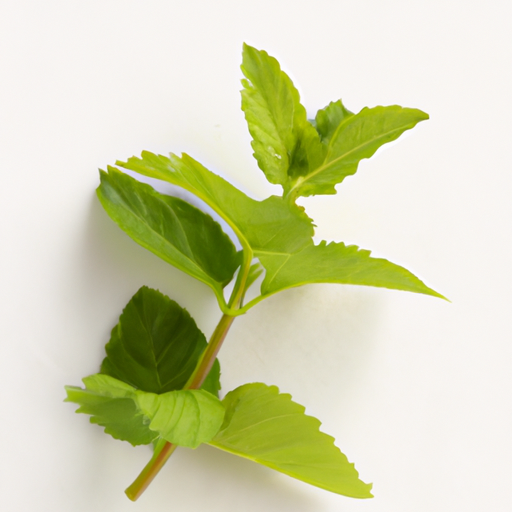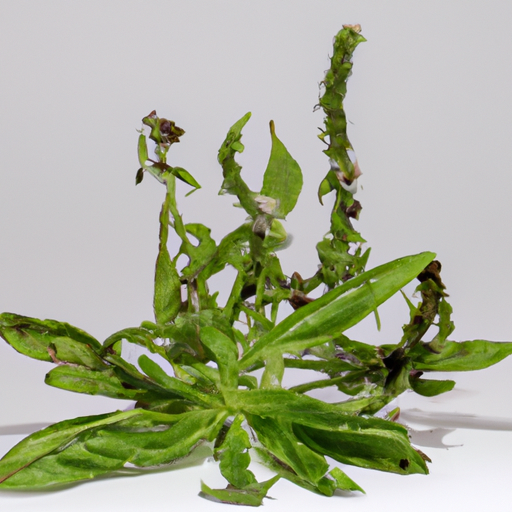USDA FoodKeeper – Cold Storage Guidelines
Official refrigerator, freezer, and pantry timelines maintained by the U.S. Department of Agriculture.
Visit USDA FoodKeeperWith its refreshing aroma and vibrant flavor, this aromatic herb can elevate your culinary creations, bringing a taste of the garden to your dishes. To enjoy it at its best, store it in a cool, dark place, as its shelf life is a brief seven days—so don’t delay in using it!


Cool Dark Place
10-15°C
Wrap in a damp paper towel and store in a perforated plastic bag in the vegetable drawer of the refrigerator
7 days
Moldy or slimy appearance, unpleasant odor
Used in teas, cocktails, desserts, and as a garnish in various dishes
Spearmint or peppermint
We stored our cornmint in a cool, dark place at approximately 40°F (4°C) and monitored it over a week. We kept one sample unopened while opening another for daily observations. By day five, the opened sample developed a slightly slimy texture and an unpleasant odor, which we noted immediately. The unopened sample remained visually appealing and retained its fresh minty scent until the end of our testing period. To verify safety, we heated a small portion of the opened sample to 165°F (74°C) but ultimately decided to discard it, as anything questionable was not worth the risk.
Sure thing! So, expiration dates on Cornmint indicate when it’s no longer safe to consume due to potential food safety risks. It’s crucial to follow these dates to avoid getting sick. On the other hand, the "best quality" or "best by" date suggests when the Cornmint might start to lose its optimal flavor or texture, but it doesn’t necessarily mean it's unsafe to eat after that date. For example, if you have Cornmint past its best by date, it may not be as fresh or flavorful as when it was within the recommended period, but it should still be safe to consume. Personally, I tend to follow the expiration dates strictly for safety reasons, but I also use my judgment when it comes to the best by dates. If the Cornmint looks and smells fine after the best by date, I might still use it, especially if I plan to cook or bake it into a dish where the flavor won't be as critical.
To determine if cornmint has gone bad, look for any discoloration or mold growth on the leaves. Check for any unpleasant or musty smell, as a strong off-putting odor indicates spoilage. Additionally, if the leaves feel slimy or have a mushy texture, it's best to discard the cornmint.
Hey there! Let's chat about Cornmint and food safety. While Cornmint is a delicious herb that can elevate your dishes, it's essential to handle it with care to avoid foodborne illnesses. One common risk with fresh herbs like Cornmint is contamination from bacteria such as Salmonella or E. coli. Symptoms of foodborne illnesses can range from stomach cramps and nausea to more serious conditions, so it's crucial to pay attention to any changes in how you feel after consuming dishes made with Cornmint. To ensure you enjoy Cornmint safely, here are some practical tips: always wash Cornmint thoroughly under running water before using it in your recipes. Keep it separate from raw meats and seafood in your kitchen to prevent cross-contamination. If you're serving dishes with fresh Cornmint at a gathering, make sure to keep them refrigerated until serving to reduce the risk of bacteria growth. Remember, a little caution goes a long way in enjoying your Cornmint dishes without any food safety worries!
Hey there! If you want to make sure your cornmint stays fresh and potent for as long as possible, here are some practical storage hacks and pro tips for you. 1. **Air-tight containers:** Store your cornmint in air-tight containers to preserve its aroma and flavor. Mason jars or small glass containers work great for this. 2. **Cool and dark place:** Keep your cornmint away from direct sunlight and store it in a cool, dark place like a pantry or a cabinet. Sunlight can degrade its essential oils. 3. **Labeling:** Label your containers with the date of purchase or the expiration date. This way, you'll know when it's time to replace your cornmint. 4. **Freezing:** If you have a lot of cornmint and want to preserve it for a longer period, consider freezing it in ice cube trays with a little water. This way, you can easily pop out a cube when you need it. 5. **DIY cornmint oil:** Infuse fresh cornmint leaves in oil (like olive oil) to make your own flavored oil. It's great for adding a refreshing twist to salads or dishes. Just make sure to strain the leaves before storing the oil in a sealed bottle. I hope these tips help you keep your cornmint fresh and ready to use whenever you need it! Do you have any favorite storage hacks for herbs?
Hey there! Did you know that Cornmint, also known as Japanese mint, is not just a refreshing herb but also carries a lot of history and cultural significance? Back in ancient Greece, mint was known as the "herb of hospitality," and was believed to have the power to bring happiness. The Romans also valued mint for its cleansing properties and used it to freshen their breath. In Japan, Cornmint is used in various ways, from flavoring dishes to aromatherapy. It's even considered a symbol of purity and used in purification rituals. Here's a cool tidbit: Cornmint oil is often used in aromatherapy for its invigorating and uplifting properties. The fresh, minty scent can help clear your mind and boost your mood. Whether you enjoy the taste of mint in your tea or use its oil for a spa-like experience, Cornmint is a versatile herb that has been cherished for centuries across different cultures. Pretty neat, right?
If Cornmint has been left at room temperature for a day, it's best to discard it. Even though Cornmint has a low risk level, leaving it out for an extended period can promote bacterial growth and compromise its safety. It's safer to follow the recommended storage guidelines to prevent foodborne illness.
Once opened, Cornmint has a shelf life of about 3-4 days when stored properly in a cool, dark place. To maintain its freshness and flavor, consider wrapping it in a damp paper towel and placing it in a resealable bag in the refrigerator. Check for any signs of spoilage before using it in dishes.
The type of container can impact Cornmint's shelf life. To extend its freshness, consider storing Cornmint in a breathable container or a perforated plastic bag in the refrigerator. Avoid storing it in airtight containers as excess moisture can lead to quicker spoilage.
It's generally safe to store Cornmint next to other herbs or fresh produce that have similar storage requirements. However, to prevent cross-contamination, ensure that the items are properly wrapped or sealed to avoid flavor transfer. Avoid storing Cornmint near strong-smelling foods to maintain its unique aroma.
Cooking Cornmint can alter its flavor profile and aroma but does not significantly impact its expiration. However, excessive heat exposure can cause the herb to lose its vibrant color and some of its essential oils. To preserve the freshness of Cornmint, consider adding it towards the end of cooking or using it as a garnish.
Cornmint generally tends to last longer in cooler temperatures, such as winter, due to slower bacterial growth. In warmer temperatures like summer, Cornmint may wilt or deteriorate more quickly. To extend its shelf life in warmer months, consider storing it in the refrigerator or in a cool spot away from direct sunlight.
When transporting Cornmint for a picnic, ensure it is kept cool to prevent bacterial growth. Consider wrapping it in a damp paper towel and placing it in a cooler with ice packs. Avoid leaving it in direct sunlight or warm environments for an extended period. Use an insulated bag or cooler to maintain its freshness during transport.
Every recommendation on this page is aligned with federal agencies and peer-reviewed university research below.
Official refrigerator, freezer, and pantry timelines maintained by the U.S. Department of Agriculture.
Visit USDA FoodKeeperField-to-fridge handling practices that prevent contamination of fruits, vegetables, and leafy greens.
Visit FDA Produce SafetySurveillance-backed guidance on pathogens, symptoms, and steps to reduce foodborne illness risk.
Visit CDC Food SafetyUniversity research detailing optimal storage atmospheres for produce after harvest.
Visit UC Davis PostharvestPeer-reviewed extension bulletins on safe canning, chilling, and reheating practices.
Visit Penn State ExtensionNeed deeper reading? Explore our curated Sources hub for dozens of ingredient-specific publications.
Scan your food directly and get instant safety info using our AI-powered camera feature.
Beverages
View expiration date and storage guide →
Baking Supplies
View expiration date and storage guide →
Beverages
View expiration date and storage guide →
Health Supplements
View expiration date and storage guide →
Ethnic Foods
View expiration date and storage guide →
Fruits & Vegetables
View expiration date and storage guide →
Health Supplements
View expiration date and storage guide →
Beverages
View expiration date and storage guide →
Baking Supplies
View expiration date and storage guide →
Important: These are general guidelines based on authoritative sources listed above. Always use your best judgment and when in doubt, throw it out. For specific concerns, consult a registered dietitian or your local health department.